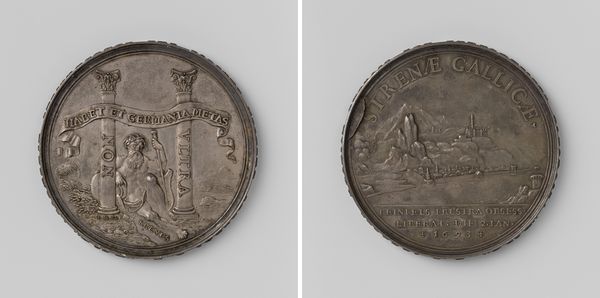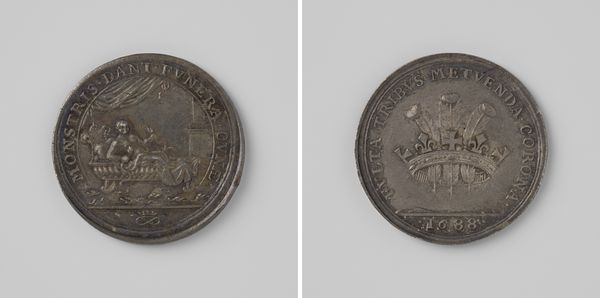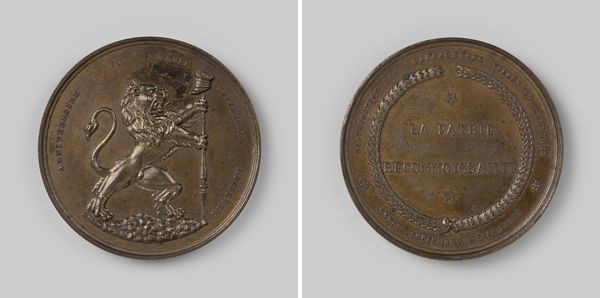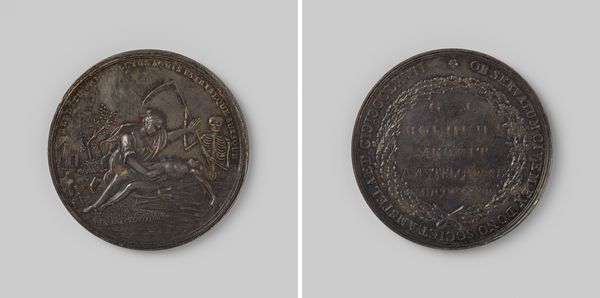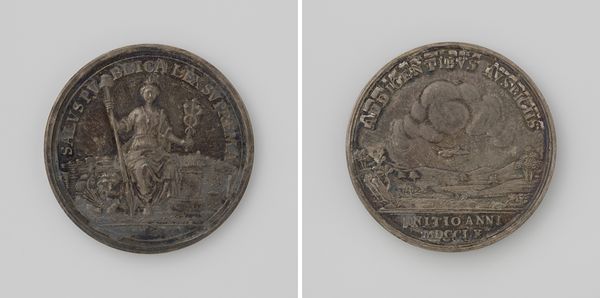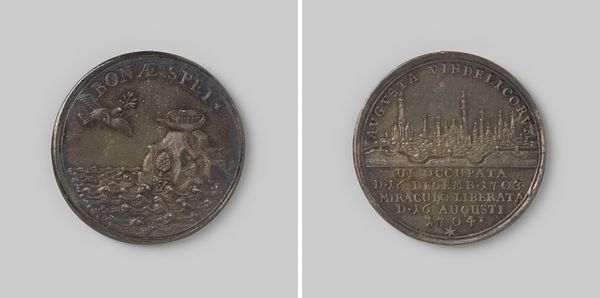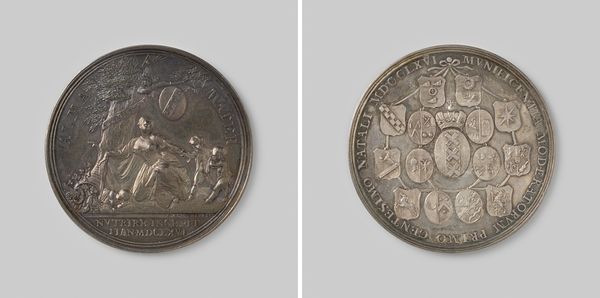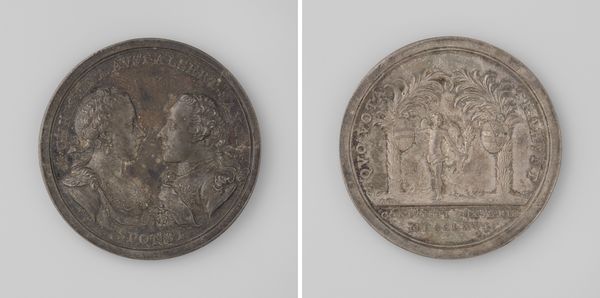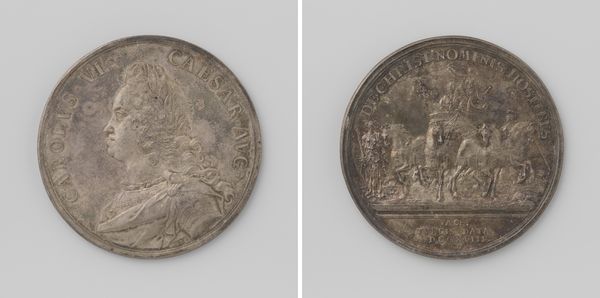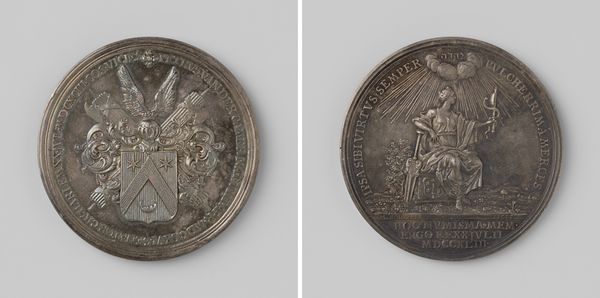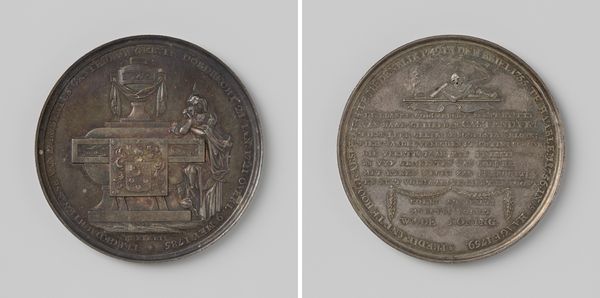
metal, relief, sculpture
#
baroque
#
metal
#
sculpture
#
relief
#
landscape
#
sculpture
#
history-painting
Dimensions: diameter 4.5 cm, weight 29.34 gr
Copyright: Rijks Museum: Open Domain
Curator: This Baroque metal relief, crafted around 1693 by Philipp Heinrich Müller, is titled "Rheinfels ontzet door de Landgraaf van Hessen"—loosely translated, "Rheinfels relieved by the Landgrave of Hesse." A compelling history painting, wouldn't you agree? Editor: Immediately, I’m struck by the visual contrast; one side appears symbolic and allegorical, the other representational of a place. The material’s coolness mirrors the gravity of what I assume is a commemorative work. Curator: Absolutely. The medal commemorates a significant event: the relief of Rheinfels Fortress by the Landgrave of Hesse during a period of intense political conflict and war in the region. Editor: Tell me more; is the inscription Gallicae referring to France and perhaps relating to the Nine Years' War? The landscape with that fortification looks meticulously crafted with delicate linear elements defining the space. Curator: Precisely. This medal functions as a potent symbol of resilience. Its creation served to galvanize regional identity in opposition to Louis XIV's expansionist ambitions. Medals and other commemoratives often played a crucial role in constructing narratives around resistance to aggression and the maintenance of local sovereignty. The symbolic image with a lion signifies power. Editor: I note the columns framing the figure. The careful repetition lends a structured rhythm to the composition. Is this intended to suggest that just rule and a rational world order is restored after war? Curator: Intriguing interpretation! The image suggests enduring victory—justice endures beyond tumult. This piece serves as both art and propaganda. Müller effectively blends artistry with strategic messaging. Editor: Thinking about semiotics in relief design prompts questions on visual legibility. I see inscriptions everywhere. Do the public, particularly those distant from court or power, actually understand? Or is it just the symbolic function of a commemorative artifact to perpetuate power through ownership? Curator: I'd counter with the observation that public understanding is also performative and ritualistic, participating in constructing solidarity. Either way, an artwork such as this raises complicated questions about representation and audience. Editor: It leaves me wondering how such pieces contribute to broader ideological systems. Curator: For me, it underscores how art can simultaneously serve political ends while capturing defining moments in our shared histories.
Comments
No comments
Be the first to comment and join the conversation on the ultimate creative platform.
